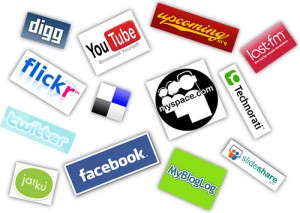Functional Tech Tools Rule Mom’s Day
The Relationship between Moms and Technology
Moms have been a powerful catalyst for tech innovation, demanding products and technologies that simplify their lives and allow them to be better parents.
At the recent CES Mommytech Summit, it was clear that the priority for moms is not to own the latest and greatest tech gear –– but to identify those tools that allow her to better function and manage her family’s schedule. She uses her Flip or digital camera to help grandma and grandpa stay engaged with the kids, she uses her phone to manage her family, and her laptop to store recipes, family photos and manage her social media activities.
According to a recent BabyCenter survey, mom isn’t only the primary user of technology in her household; she’s often the one to identify the need for new technology in the first place. Here are a few more tidbits from the survey:
5 Truths About the Influence of Technology on the 21st Century Mom
1. From geek chic to utility, tech purchase criteria change after becoming a mom. When a woman becomes a mom, she has to incorporate more than 10 hours of parenting into her already packed schedule. In this new world, utility is a must-have. Over half of moms say that after having a baby, simplicity, multi-functionality and convenience are her biggest priorities when it comes to technology. Color choice and design all fall to the bottom of her list.
2. Mom is integral to the tech purchase decision process. Sixty-seven percent of moms play a key role in purchasing new technology for their family. When it comes to buying a new laptop, 73% of moms say they are the initiating the purchase process and choosing the key features.
3. Moms have become tech-fluent to better navigate their new roles. From Dr. Mom to Chief Memory Officer, becoming a mom means taking on new roles. Moms look to technology to make those jobs easier. Moms’ top three uses of technology include handling the family schedule, managing family health and wellness, and storing and sharing memories. Seventy-five percent of moms say they’re in charge of documenting and sharing family memories, with 93% owning a digital camera and one in three never leaving the house without it.
4. Technology convergence gives moms more freedom to roam and interact with family. Now that smart phones and wireless home networks are mainstream, the concept of “home office” is evolving. Moms don’t have to be in the house to be connected. Seventy-two percent say that, after having children, they’re far more likely to use the laptop in the kitchen or living room so they can stay near the children.
5. Moms are aware of technology’s negatives, and they’re taking steps to minimize them. As technology becomes more ingrained in their daily lives, moms worry about downsides like less physical activity, lack of face-to-face contact and shorter attention spans. However, moms are taking steps to mitigate these risks by making sure their families enjoy time together uninterrupted by technology (78%), setting limits (75%), using parental controls (41%) and taking away devices (37%).
The 21st Century Mom is no longer intimidated by technology. She’s knowledgeable, discerning, and demanding, and the primary user and decision maker for tech products in the home. And when the technology doesn’t work, she blames the brand. Tech companies who take the time to understand mom and build products that empower her will earn a very powerful fan with a whole lot of friends.


